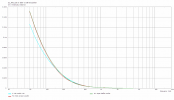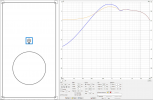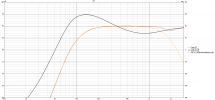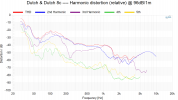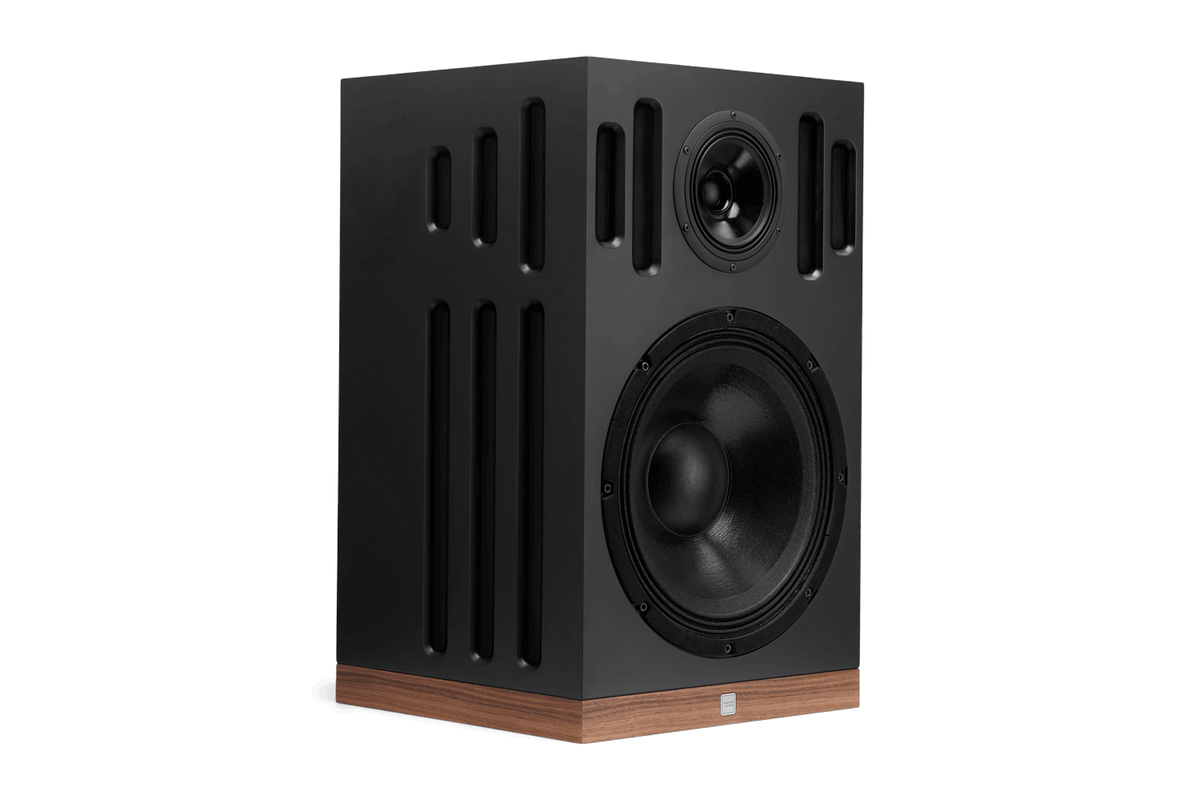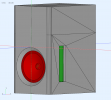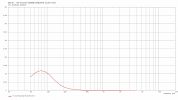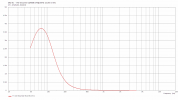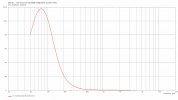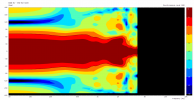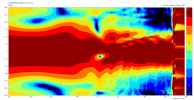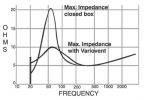OWC
Active Member
- Joined
- Apr 14, 2019
- Messages
- 204
- Likes
- 154
At these frequencies, there are no "individual sound sources", since the wavelength of the frequencies are much bigger than those sources.Several unfortunate effects work together to increase distortion in such designs, and the end result of this misfortune may be a speaker that has so high distortion it is unusable for high performance sound reproduction. So the problem is real, and it has to be addressed.
The first problem is that the output at the fundamental is reduced, partially due to cancellation from the acoustic port outputs, partially due to low q in the box.
Then there is the problem of radation patterns from the individual sound sources, the driver cone and the acoustic ports, which does not necessarily sum in a similar way across the frequency range, leading to harmonics actually getting amplified, and this amplification can be very different at different radiation angles.
Then the acoustic ports will introduce harmonic distortion themselves, due to non-linear properties of the acoustic resistive material in use. This distortion can be very significant, and actually larger than the distortion from the active driver.
It is possible to reduce this harmonic distortion to acceptable levels, but it is not necessarily easy, if the speaker is very small and very high attenuation of rear sound radiation is a requirement.
Don't know if this was a better explanation, my intent here was more to fill in with some more information.
This is called the lumped element or control system region.
About the distortion coming from the ports and damping material.
I doubt about its significance, and if so it results in even order harmonics.
Damping material does add addition distortion, that is certainly true, I only have never seen it so significant.
I mostly likely think it's the just distortion from boosting, which I agree with @ctrl
Speaking of which, how much is being boosted is a bit of a way of how you look at the whole problem.
Even from your simulation @ctrl there is a peak around 650Hz at +9dB
So seen from this peak, the 100-150Hz region is even 10dB lower.
A usual baffle-step correction is 6dB in a closed box, so it will be AT LEAST 6dB
On an open baffle system this will be more.
Which is in term of excursion at least twice as much = 10^(6/20) = 2
Which is equal in double the amount in percentage in distortion.
D&D is using some custom Seas Prestige line woofer.
The base model has been around for decades, and is most certainly not as optimized as speaker drivers nowadays.
So I don't know if the distortion will be totally symmetrical or not.
I don't disagree with you on that, but I was just saying that it really depends as a general statement.
As a general rule of thumb, most 8 inch woofers are starting to get much higher distortion levels from 50-60Hz and below.
Depending on the impedance peak. So roughly twice the frequency of the impedance peak would be still a low region in sense of distortion.
And still, here is an example with a relative symmetrical BL and Kms, yet the distortion below 150Hz is mostly even order.
Probably because there seems to be a dynamic offset towards one direction.
Since the 8C is completely symmetrical as a stereo pair, (seen from the listener point of view), I think I would have crossed a little higher.
Especially because room modes are much more of an issue at those frequencies.
I get that you might want to write certain things a bit more "lightly" and "with humor".
There is nothing wrong with that, but just keep in mind that for a lot of people this style of writing is not really respectful.
That doesn't have anything to do with lack of fun, just a difference in culture.
Last edited:

